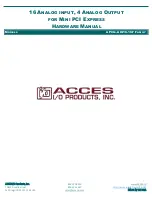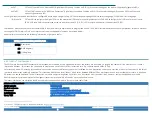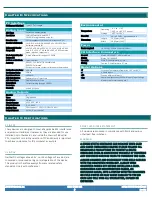
ACCES I/O Products, Inc.
MADE IN THE USA
mPCIe-AIO16-16F Family Manual
8
Rev 01
enEXT:
SET enEXT to enable the “External IRQ” Digital Input Secondary Function on
DIO 13 so the selected edge on the input will (optionally) generate IRQs.
enSTART:
SET enSTART to enable the “ADC Start Conversion” Digital Input Secondary Function on DIO 14 so the selected edge will cause a
n ADC Start Event and
optionally generate an IRQ.
Each Digital Input Secondary function has a configurable active edge, rising or falling. SET the corresponding edge
XXX
bit to select rising edge, CLEAR the bit for falling edge.
I/O Group1:0
SET each bit to configure the digital I/O bit in the associated I/O Group for use as digital outputs. CLEAR a
bit to configure the I/O Group for use as inputs.
(D0 is I/O Group 0 which controls the output vs input direction of DIO 0; D1 is I/O Group 1 which controls the direction of DIO1)
In Windows
1
, please consult the various samples (C#, Delphi, and more) to explore how to program the device. The AIOAIO Software Reference Manual.pdf provides reference material
covering all AIOAIO Library APIs. A quick reference of the most-applicable functions is provided, below:
Under certain circumstances the following information might prove useful:
PCI Express Mini Card Plug-and-Play Data
BAR[n] Description
1:0 DMA Registers
3:2 I/O Registers
A NOTE ABOUT PERFORMANCE
The PCI Express bus and the PCI Express Mini Card standard are capable of very high bandwidth, but the latency per-transaction is roughly the same as all the other busses
–
it hasn’t
improved in decades. This means you can expect to usually see a not-less-than 1MHz transaction rate. Typical rates exceed 3MHz [0.3µs].
Unfortunately, modern Operating Systems have introduced a new source of latency, the kernel / userland division. Application code runs in userland, which must transition to the kernel
in order to perform any hardware operation. This transition adds quite a lot of latency, which varies between different OSes, motherboards and revisions thereof, etcetera. A Windows
XP system can see an additional 7µs per transaction; a modern computer might see 3µs or less. Any transaction from the kernel itself, however, avoids this additional overhead.
Real-time operating systems will enable the highest transaction rates possible, all the way up to the hardware limits.
The latest information can always be found on the product page on the website. Here are some useful links:
Links to useful downloads
ACCES web site
Product web page
This manual
acces.io/MANUALS/mPCIe-DIO-24S.pdf
Install Package
acces.io/files/packages/mPCIe-DIO-24S Install.exe
Linux / OSX
1
In Linux or OSX please refer to the documentation at




























